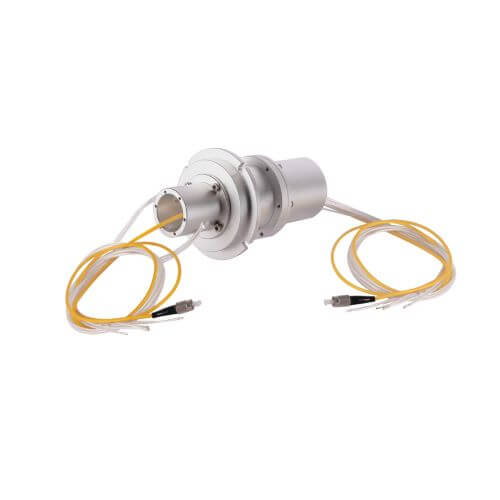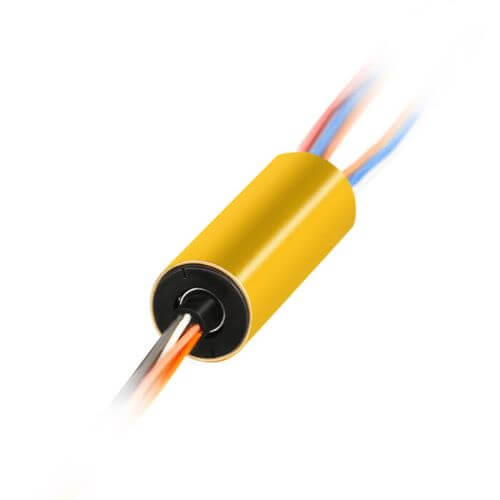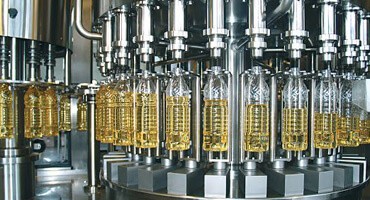In this article, we delve into the fundamentals of slip ring applications in filling machines, understanding their functioning, types, advantages, critical considerations, maintenance, and potential future advancements.
Introduction to Slip Ring Applications in Filling Machines
It’s impossible to ignore the significant role industrial machines play in today’s fast-paced, mass-production markets. Among these machines, filling machines stand out as an essential part, a cornerstone of numerous industries including food & beverages, pharmaceuticals, cosmetics, and more. These machines streamline the process of dispensing a variety of products into packaging containers, bottles, etc., contributing to higher efficiency, accuracy, and production consistency.
Now, if we take a closer look at these filling machines’ internal workings, we are introduced to a vital component known as a slip ring. Slip rings, also called rotary electrical connectors or electrical rotary joints, are designed to facilitate the transmission of power and electrical signals from a stationary to a rotating part.
In the framework of a filling machine, which usually functions based on a rotating principle, slip rings take center stage. For these machines to carry out their work – dispensing the exact volume of a product into a container while moving continuously – undisturbed electrical connectivity is imperative. And that’s precisely where a slip ring steps in and shines.
By making sure power and signals are smoothly distributed to the various rotating parts of the filling machine, slip rings ensure an uninterrupted operation. This functionality ultimately enhances the machine’s overall performance and productivity, allowing industries to meet their large-scale production demands efficiently and consistently. In the following sections, we will be delving deeper into these aspects, exploring the intricacies of slip ring applications in filling machines.

Understanding Slip Rings and their Functioning
What are Slip Rings?
To understand slip rings, we must first visualize industrial machines as being composed of both stationary and rotating parts. These components need a constant exchange of power and electrical signals to perform their tasks. Slip rings, serving as the bridge between stationary and rotating components, are electromechanical devices that make this connectivity possible.
The capability to transmit power and electrical signals while allowing unobstructed rotary motion is what distinguishes slip rings from other electrical connectors. Employed in a myriad of applications, these rings enable devices like filling machines to work seamlessly despite their circular motion.
Working Principle of Slip Rings
The core of a slip ring’s functionality rests on two principal components – ‘rings’ and ‘brushes’. The ‘ring’ is the part that rotates along with the machine, whereas the ‘brush’ is a sliding contact that brushes against the ring, being stationary.
As the machine operates and the ring rotates, the brush maintains a consistent electrical connection. Current or signal enters through the stationary brush, continuously passes through the rotating ring, and subsequently travels into the rotating component of the machine. These dynamics ensure that the moving parts of the machine receive unbroken power and signals, enabling smooth and steady rotation without the need for pausing or stopping.
Types of Slip Rings Used in Filling Machines
When it comes to filling machines, not just any slip ring would fit the bill. Various factors including the environment, speed of operation, required load, and compatibility determine the type of slip ring used.
- Pancake Slip Rings: True to their name, these slip rings bear resemblance to a pancake with their disc-like shape. Compact and efficient, they are favored in machines where space is a concern.
- Mercury Slip Rings: Utilizing liquid mercury to enable electrical contact between the brush and ring, these slip rings come with reduced friction and wear benefits. An excellent choice, especially for high-speed operations, but their use must comply with safety regulations because of the toxic nature of mercury.
- Capsule Slip Rings: Compact and lightweight, capsule slip rings specialize in signal transmission. Their reduced size makes them ideal for machines where weight and space need strong consideration.

Given their significant role in filling machines, insight into these rings’ functioning is fundamental for anyone looking to understand these machines’ successful working mechanics.
Application of Slip Rings in Filling Machines
Integration and Operation of Slip Rings in Filling Machines
In a filling machine, rotational motion typically lies at the heart of the operations – think of the machine’s conveyor belt facilitating the movement of containers or bottles during the filling process. Integrating slip rings into the machine becomes crucial to ensuring seamless functioning and maintaining the machine’s speed and efficiency.
Upon incorporation, slip rings become a core part of the machine’s electrical distribution system. The stationary brushes engage with the rotating rings to form a connection that allows power and electrical signals to transfer from the stationary to the rotating components. For instance, data from sensors that monitor the filling machine’s operation would be transmitted between the control panel and the other parts seamlessly via the slip rings in place. Consequently, the components are always in sync, which results in a highly efficient system.
The Role of Slip Rings in Power and Signal Transmission within Filling Machines
The key responsibility of slip rings in filling machines is to facilitate power and signal transmission between stationary and rotating components without impeding the machine’s rotational movement. By ensuring this, they underpin the machine’s uninterrupted and synchronous operation throughout the filling process.
In an unbroken flow, the slip rings transmit vital information – such as position or speed data – from sensors to the control system, making real-time monitoring and adjustments possible. As a result, the filling machine can maintain accuracy and precision in all aspects of its operation, ultimately contributing to the production consistency and quality of the finished products.
In summary, slip rings play a critical role in the overall efficiency, precision, and reliability of filling machines. By integrating slip rings, these machines can operate continuously without interruptions or delays, guaranteeing the desired productivity and quality levels in today’s high-demand production landscape.
Key Advantages of Using Slip Rings in Filling Machines
Increased Efficiency and Speed in Operations
One of the primary benefits of integrating slip rings into filling machines is the remarkable boost in efficiency and operational speed. Because slip rings offer an uninterrupted flow of power and signals between various machine parts, the entire process becomes more cohesive and streamlined. This minimizes unnecessary delays or stoppages due to broken connections, ensuring a faster-paced filling operation. As a result, overall production time is dramatically reduced, and output is increased, which directly contributes to the profitability and productivity of any industrial operation.
Ensuring Continuous, Uninterrupted Motion and Operation
The inherent design of slip rings facilitates continuous rotary motion, which is crucial for the functioning of filling machines. Since they maintain an uninterrupted electrical connection between the stationary and rotating parts of the machine, there is no need for the process to pause for the recharge or reset of power sources. This uninterrupted operation leads to smoother performance, more consistent output quality, and reduced potential for mechanical wear and tear, thereby contributing to the filling machine’s longevity.
Ability to Handle High-Speed Data Transfer
Modern industrial operations demand a high level of precision, for which real-time data and swift adjustments to operational parameters are essential. This requirement is fulfilled by the slip ring’s ability to handle high-speed data transfer. They allow for the rapid and seamless transmission of critical data from various sensors to the machine’s control system. This functionality means the system can ceaselessly monitor operations, make immediate adjustments as required, and maintain the highest level of operational accuracy and product quality.
To summarize, the integration of slip rings in filling machines has an overwhelming set of advantages. Their ability to foster increased efficiency, ensure uninterrupted operation, and handle high-speed data transfer, all consolidate to significantly enhance the performance and output of these machines, making them indispensable in industrial settings.
Considerations While Choosing Slip Rings for Filling Machines
Selecting the appropriate slip ring for a filling machine is a crucial task, as it can directly affect the machine’s performance, efficiency, and longevity. Here, we outline several key factors to consider while choosing slip rings for filling machines:
Current and Voltage Requirements
The foremost aspect to examine is the compatibility of the slip ring with your filling machine’s power requirements. A slip ring must be capable of handling the specific current and voltage needs of the machine. Be sure to assess your filling machine’s operating conditions and power specifications, and opt for a slip ring compatible with those requirements to maintain seamless operation and safety.
Environmental Conditions
Keep in mind the environmental conditions in which the filling machine will operate. Factors such as temperature, humidity, dust, and the nature of the product being filled can all have an impact on the slip ring’s performance. Depending on these factors, choose a slip ring with the appropriate protective measures, such as sealing or corrosion resistance, to ensure reliable performance under varying conditions.
Durability and Reliability
The longevity and reliability of the filling machine are closely tied to the durability of the slip ring. To prevent frequent breakdowns and minimize machine downtime, select high-quality slip rings renowned for their durability and extended service life. Additionally, opt for low-wear designs, which can further enhance the life of both the slip ring and the filling machine.
Integration with Existing Systems
Consider how well the slip ring will integrate with your existing filling machine and other connected systems. Evaluate if the slip ring supports the required communication protocols and can accommodate any specialized connectors, if necessary. Seamless integration is essential to ensure smooth functioning and prevent potential complications or incompatibilities.
Manufacturer’s Reputation and Support
When selecting a slip ring, the manufacturer’s reputation, expertise, and post-sales support should be taken into account as well. Reliable manufacturers typically guarantee higher-quality products with better performance and durability. Furthermore, they provide support services and assistance if any issues or technical concerns arise, a factor that contributes to a longer-lasting and well-maintained filling machine.
Cost and Maintenance Considerations
Lastly, consider the total cost of purchasing, installing, and maintaining the chosen slip ring. Balance the need for a high-quality slip ring with your budget constraints and factor in maintenance costs over its lifespan. Opt for a slip ring that offers high performance and reliability while still being economical regarding initial cost and long-term upkeep expenditures.
By taking the above considerations into account, you’ll be better equipped to make a well-informed decision while choosing the ideal slip ring for your filling machine, ultimately contributing to improved operational efficiency, performance, and longevity.
Maintenance and Troubleshooting of Slip Rings in Filling Machines
Proper maintenance and effective troubleshooting are critical to keeping your filling machine running smoothly. In this context, the slip rings can often be seen as the “heart” of the system, warranting special attention and care.
Importance of Regular Maintenance
Regular and proactive maintenance of slip rings prolongs the life of the device while ensuring its performance remains at an optimal level. Since slip rings are the primary mediums for power and data transfer within the filling machine, their proper maintenance is vital to ensure the machine runs smoothly and efficiently.
Routine maintenance helps in promptly identifying and rectifying potential issues before they exacerbate and lead to a complete machine breakdown, thereby saving both downtime and expensive repair costs. This includes tasks like routinely cleaning the brushes and rings, checking for wear, and ensuring that the electrical connections remain secure.
Also, it’s essential to adhere to the maintenance guidelines or schedules provided by the slip ring manufacturer to ensure that the specific maintenance needs of the device are adequately met.
Common Issues and Troubleshooting Tips
Several common issues can arise with slip rings over their lifespan, and knowing how to troubleshoot these can help keep the filling machine operational. We outline a few typical problems with their associated fixes:
Poor Connection or Intermittent Signals: Dirt, dust, or corrosion can cause poor connections or intermittent signals. Regularly cleaning the contact surfaces of slip rings can help address this issue.
Overheating: Excessive heat can indicate an overcurrent situation or a lack of sufficient cooling in the machine. Address this by checking the device’s power requirements, load conditions, and cooling system to ensure they are all within acceptable limits.
Excessive Noise or Vibration: This may signal worn-out or damaged components. Check the slip rings for wear and replace components if necessary.
Rapid Wear of Brushes: This issue often signals a misalignment between the brushes and the rings. Regular inspection and alignment checks can prevent accelerated wear.
By recognizing the importance of regular maintenance and possessing knowledge about common issues and their solutions, an operator can ensure that slip rings in filling machines operate optimally, minimizing potential downtime and offering a productive workflow.
Trends and Future Advancements in Slip Ring Technology for Filling Machines
The technological landscape of industrial manufacturing is perpetually evolving, and slip ring technology for filling machines is no exception. New advancements and trends in this field promise to further elevate the performance and efficiency of these machines.
Technological Innovations in Slip Rings for Filling Machines
Current technological innovations are focusing primarily on augmenting the efficiency, durability, and functionality of slip rings. Advancements such as the development of fiber optic rotary joints (FORJs) and Ethernet slip rings are worth noting.
FORJs facilitate the transmission of high-speed data and signals without loss or interference, making them incredibly beneficial in precision-oriented operations like those in filling machines. Simultaneously, Ethernet slip rings allow for seamless integration with modern network systems, supporting high-speed and high-data volume transmission fit for today’s connected factories.
There’s also a growing interest in the development of contactless slip rings, which use magnetic or optical means to transmit power and data. These rings eliminate the physical wear experienced by traditional slip rings, resulting in longer operational life and lower maintenance needs.
Anticipated Advancements and Their Potential Impact
Looking ahead, we can anticipate advancements that continue to align with the growing demand for smarter, more connected, and more efficient manufacturing systems.
For instance, industry experts predict the continued rise of IoT integration within slip ring technology. These “smart” slip rings will offer real-time monitoring and diagnosis capabilities, reducing downtime and improving preventative maintenance practices.
Further improvements in contactless slip ring technology are also anticipated. This will lead to longer-lasting, even more reliable slip rings that can handle larger electrical loads and higher data rates with less friction and noise.
Such advancements in slip rings can significantly raise the bar of performance, durability, and efficiency of filling machines. Additionally, they enable more extensive integration with modern industrial networks that empower high-speed, high-precision, and smart manufacturing.
In essence, these current and projected advancements in slip ring technology are set to transform the functioning of filling machines, ushering in a new era of smarter, faster, and more efficient production.
Conclusion
Slip rings play a crucial role in the efficient functioning of filling machines. By understanding their applications, selecting the right type, maintaining them effectively, and staying updated on the latest innovations and trends, industrial operations can witness considerable improvements in terms of productivity and efficiency.
See What We Can Do

